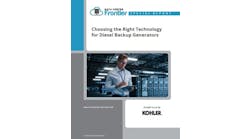CBRE Partners With LitBit to Use AI to Manage Data Centers
The effort to bring artificial intelligence into the data center received a significant boost this week when CBRE Data Centre Solutions said it would use AI technology from LitBit to automate the management of data center facilities.
The partnership is significant because CBRE manages more than 800 data centers around the world, with a portfolio spanning enterprise, colocation, hyperscale, and cloud data centers. CBRE said it hopes to “use AI to revolutionize facilities maintenance within data centers and critical environments.”
LitBit is a startup from San Jose that has developed AI agents that absorb subject matter expertise and train algorithms to manage tasks in data centers. As an example, a data center technician can create an AI agent and teach it to use sensors, sound and computer vision to collect data and respond to changes in the environment. The new AI co-worker can then be used to extend the employee’s skills, covering an overnight shift or managing a new data hall.
Creating AI Personas for the Data Center
LitBit recently worked with ROOT Data Center in Montreal to use AI to monitor the emergency backup generators, marking the first use of AI technology to reduce the risk of outages.
Litbit’s AI technology is designed to turn machines into collaborative AI-driven “co-workers” (known as “personas”) that can clone the expertise of employees to create a new AI-empowered workforce.
CBRE will train a Litbit AI persona named “REMI” (Risk Exposure Mitigation Intelligence) on the normal operating conditions of its data center facilities and equipment globally, which can then be used by CBRE’s teams for predictive maintenance and rapid problem diagnosis.
Litbit has been working on integration with CBRE Data Centre Solutions’ Chief Reliability Officer Mike Doolan. Active technology pilots are already in place, and CBRE anticipates deploying REMI in the next six months.
The intention, CBRE says, is to create the world’s largest AI repository of machine operating data. CBRE will deploy Litbit’s AI technology to magnify the reach and availability of its integrated data center operations teams.
Insights From Employees, Data, Sensors
“Artificial intelligence is transforming industries in all parts of the economy,” said CBRE Data Centre Solutions President, Paul Saville-King. “CBRE has always had a commitment to using technology to provide better results for our customers at optimal cost to value, and we believe this technology will allow us to further this agenda. The idea that expert knowledge of all the facilities, assets and equipment we manage can be in the back pocket of every CBRE technician is exciting and revolutionary.”
REMI will run both in the cloud via smartphone and on the edge via permanently deployed computing devices. It will aggregate the knowledge of CBRE’s worldwide service experience, thousands of technicians, and millions of machines into a single system. REMI will provide improved coverage for manned locations and basic coverage in unmanned “lights out” facilities.
LitBit was founded by Scott Noteboom, an industry veteran who has designed and built data centers for AboveNet, Yahoo and Apple. At Yahoo, Noteboom’s team pioneered the “chicken coop” design in the company’s data centers.
The CBRE partnership aligns with Noteboom’s ambition to use AI to use automation to scale data center infrastructure to keep pace with torrid growth in cloud computing, as well as providing management capabilities in areas where skilled data center staff may be hard to find.
“CBRE is the perfect example of a company whose operating model can be transformed by artificial intelligence,” said Noteboom. “Their global scale, varied client base, and mission critical remit mean that they need complete flexibility of implementation, massive scalability, and a completely noninvasive way of implementing AI.”






